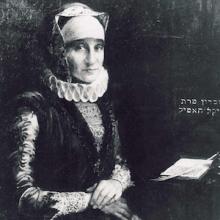Browse
Social Structure

Review
Teaching East Asia Online Curriculum Projects
The lessons provided are insightful explorations of Japanese history that strike a balance between academic rigour, accessibility, and being able to draw student attention, making them a valuable addition to any world history teacher’s toolkit.
Review
A History of the World in 100 Objects
Overall A History of the World in 100 Objects is a great resource to teach world history through visual culture in an accessible and succinct format for both school and college-level classes.
Review
Tasveer Ghar (A House of Pictures)
This database would be most useful for instructors teaching modern South Asia and for students in college-level seminars.
Review
Mediateca INAH
Mediateca INAH facilitates virtual engagements with over half a million interrelated digital reproductions of maps, paintings, sculptures, photographs, audio recordings, documentaries, books, as well as other textual primary sources.
Review
The Song Dynasty in China
What makes this module particularly interesting is its usage of a 12th century picture scroll as a means to explore various facets of Chinese life during this period.
Review
Res Obscura
Functioning primarily as the personal blog of historian Benjamin Breen, Res Obscura stays true to its by-line by being ‘a catalogue of obscure things’.Source
Excerpt from Ibn Battuta's Travels in Asia and Africa 1325-1354
This source comes from the travel book of Ibn Battuta (1304-1369), a Moroccan Berber scholar and explorer.
Teaching
Long Teaching Module: Trade and Religion in the Indian Ocean Network, 1100-1500
Global trade is a central aspect of the contemporary world, but trade was also important in pre-modern eras.

Review
Latin American & Caribbean Digital Primary Resources
As a whole, the database serves the important goal of improving the accessibility of online libraries and archives. It provides a jumping off point for research into a variety of topics within Latin American history, and as it expands, its value will only increase
Teaching
Syllabus: Women and Gender in World History, 600-2000
The syllabus below lays out a 15-week course, beginning in the 6th century and continuing through the 20th century. It provides suggestions for how to use units and their various parts with your students, as some of the materials are student-facing, and others are instructor-facing.